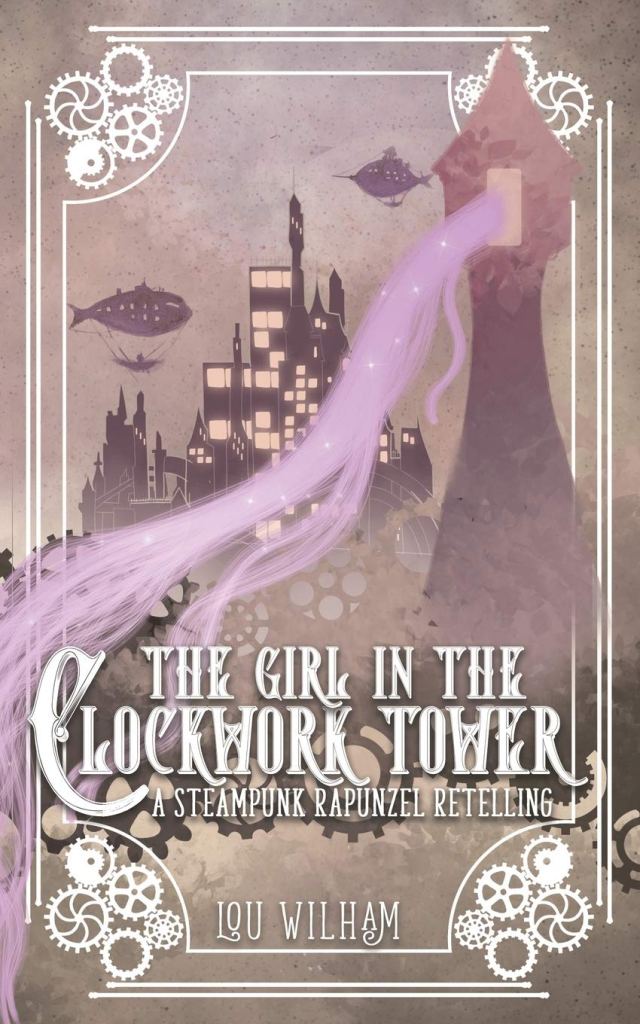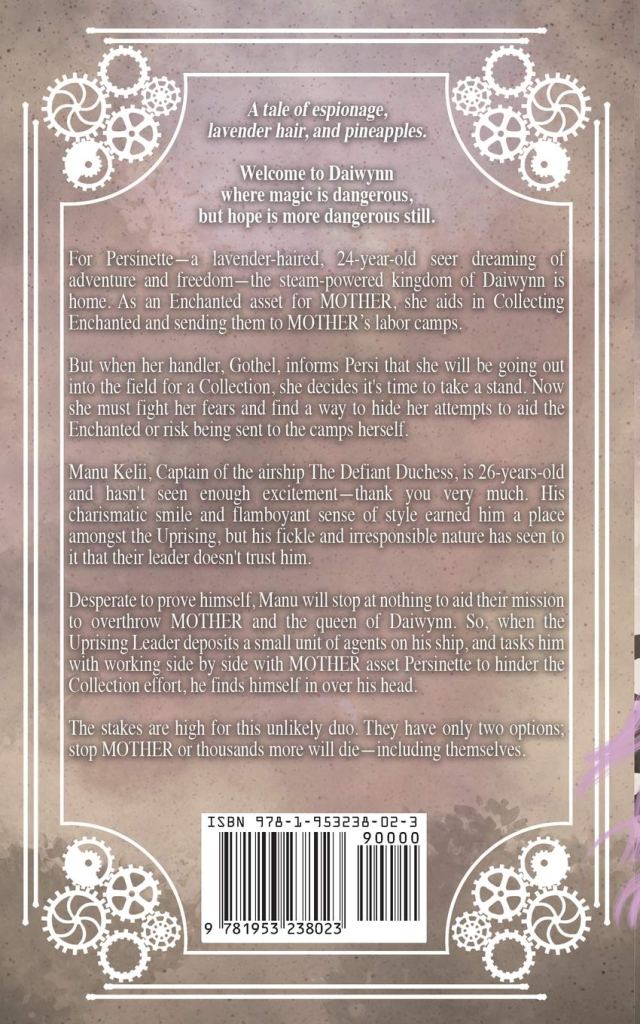Written by Lou Wilham
Billed as a steampunk adaptation of the Brothers Grimm’s classic fairy tale Rapunzel, I was looking forward to seeing what the author, Lou Wilham, brought to the story. As a fan of classic fairy tales (not the Disneyfied versions, thank you), and someone who enjoys steampunk dressings, the concept is a strong one. Unfortunately, I was left disappointed by The Girl in the Clockwork Tower, which never really gave me a sense of Rapunzel, nor its steampunk setting.
While there are elements obviously inspired by Rapunzel, including a female lead with flowing hair, a hero determined to save her, a tower, and a caretaker of sorts called Gothel, the similarities end there. The inclusion of Gothel, referencing Madame Gothel or Mother Gothel depending on the version of Rapunzel, is quite clever; and I enjoyed the evil organisation at the centre of the story being called MOTHER, befitting of this fairy tale. Also, I wonder if the lead character of Persinette (or “Persi,” for short), is a reference to Petrosinella, a pre-Rapunzel tale with similar subject matter, to both the fairy tale and Wilham’s reimagining.
Not much is made from the steampunk setting, other than flying ships, and a few references to steam misting throughout cities in the story. While I am certain the author had a clear steampunk view in her mind when writing The Girl in the Clockwork Tower, this did not translate to the book. I will note that this is the first book in Wilham’s The Clockwork Chronicles, and the second book—which is released in September, and I have not read—The Unicorn and the Clockwork Quest: A Steampunk Unicorn Story, might further establish this world as steampunk.
As I read The Girl in the Clockwork Tower, realising as I went that this is a very loose reimagining of Rapunzel with such a small focus on its steampunk trappings, I caught myself wondering, more than once, what it is. To that, I say it is very much a G-rated fairy tale that combines fantasy with science fiction. With a dry sense of humour and plenty of whimsy, the book moves along at a quick pace that doesn’t challenge its readers. While it suits that purpose well enough, it is not the type of story that I gravitate towards. Mileage will vary depending on the reader’s tastes, and while this book wasn’t for me, it might be for you.
Due to the tone and style, I assume this has been written with younger readers in mind. The prose is welcoming, and through its 366 pages (estimated at 368 swipes on Kindle), quite a bit happens. Descriptions of events, of characters and of locations are kept brief, which will definitely be a boon for some readers, if not me, personally.
The Girl in the Clockwork Tower tells the story of the aforementioned Persi, and the second point of view character, Captain Manu Kelii. For much of the story, Persi feels like little more than a damsel in distress, however she does come into herself as the story progresses. Her evolution feels sharp and sudden, but by the end of the book, you will cheer her on. Manu is a flamboyantly fun character, whose interactions with Persi brought a smile to my face. The back and forth between Persi and Manu felt natural, and the characters stand on their own well, carrying their parts of the book nicely. Chapters are told from the point of view of Persi, Manu or both, and the POV character/s are clearly marked in the chapter titles.
The supporting characters in The Girl in the Clockwork Tower are also largely fun, if two-dimensional. They serve their purpose in supporting the leads well, but none of them captured my attention to the point that they felt like strong additions to the story, or living, breathing characters with stories of their own. These characters come from all fairy tale spectrums, with witches, goblins, unicorns and various mythical beasts, but at times, it felt like this was the fairy tale world from Shrek, with all these characters meshed together for the sake of it. I will say that I appreciate the inclusion of a character identifying as “them,” as well as gay characters, including some brief commentary about equality, which is always wonderful to see.
Between the mishmash of characters and the world itself, I struggled with my attempts to suspend my disbelief. I have commented about the lack of steampunk elements earlier in this review, and in its place is a combination of fantasy magic and science fiction. Perhaps the sci-fi elements were intended to translate to steampunk, but in reading it, it felt like something from Star Wars. The suspension of disbelief was made harder, due to it being set in the fictional world of Daiwynn, but still making references to “terrible French accents,” and characters described as unicorns, despite being presented entirely human, but with colourful hair, with no further explanation.
If the preceding chapters didn’t give it away, The Girl in the Clockwork Tower is a difficult book for me to review. Despite my initial disappointment by it being a very loose take on Rapunzel and a lack of steampunk elements, it is well-written and edited. I can see younger readers enjoying the book, despite some logic gaps and light prose. It’s not for me, and that’s okay.
Favourite Passage
“Lookit, Bernard. They have pineapple gin!” Captain Manu Kelii found excitement wherever he could get it these days, but especially in all things pineapple.
The Girl in the Clockwork Tower: A Steampunk Rapunzel Retelling, Chapter 2: “Captain Manu Kelii”
The Girl in the Clockwork Tower: A Steampunk Rapunzel Retelling was provided by BookSirens for the purpose of an honest review.
The Girl in the Clockwork Tower is available in paperback and eBook formats from book retailers (including—but not limited to—Amazon).
You can follow Lou Wilham online, via:
Note: I do not post scores on reviews on this website, but do post them on my Amazon and Goodreads reviews:





Dude such a bas ass page I have subscribed and followed great materiel on here and the page looks pro
LikeLiked by 1 person